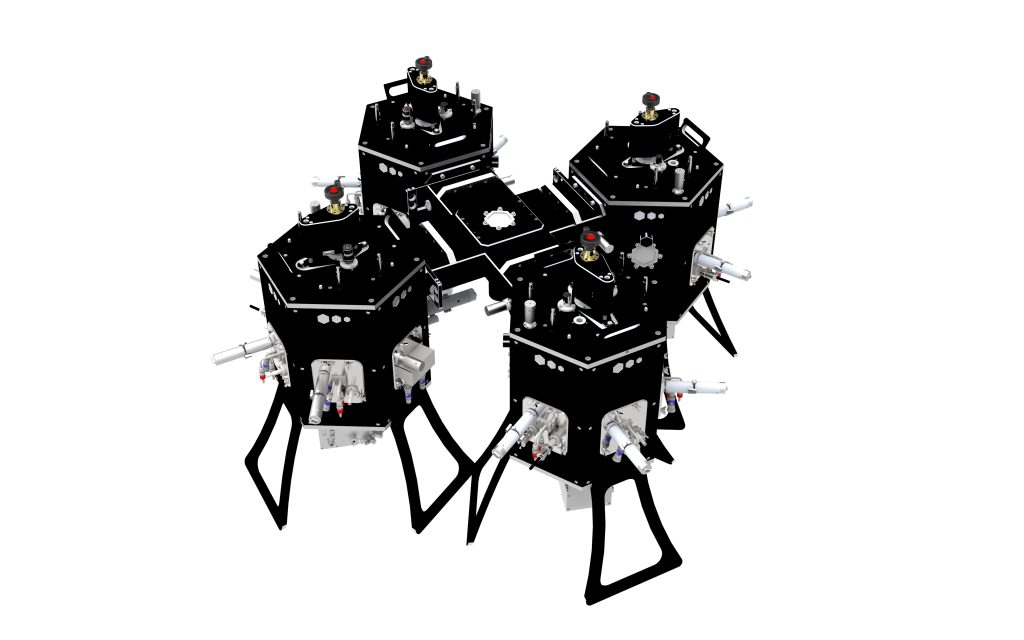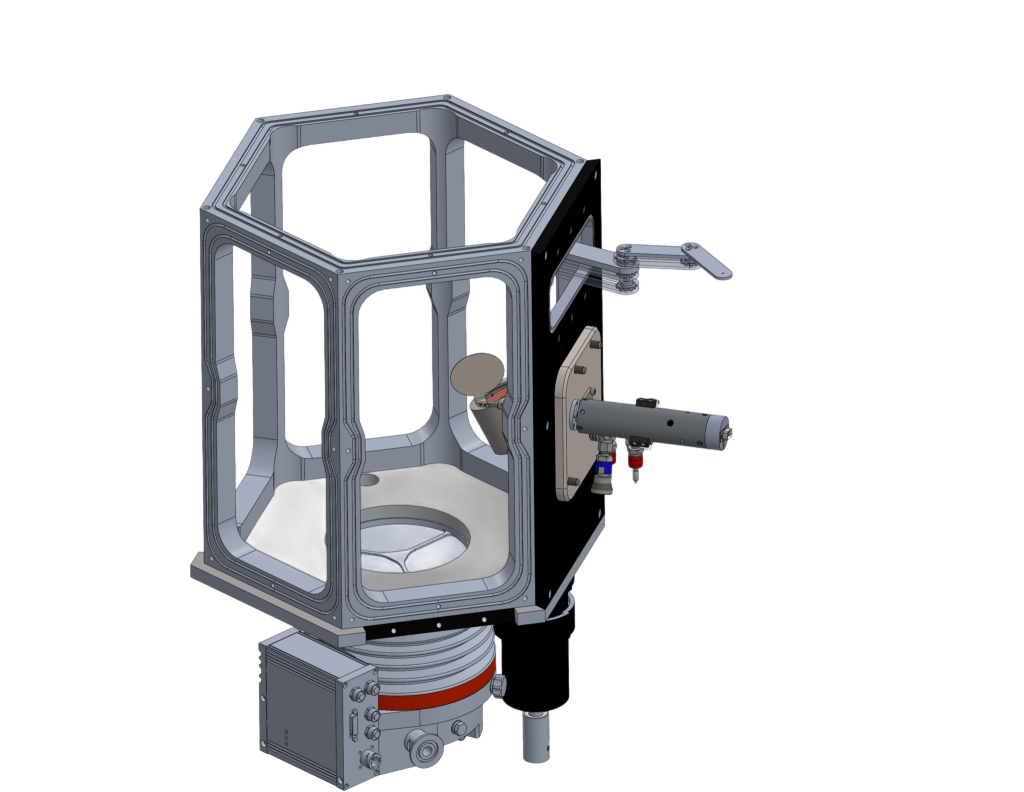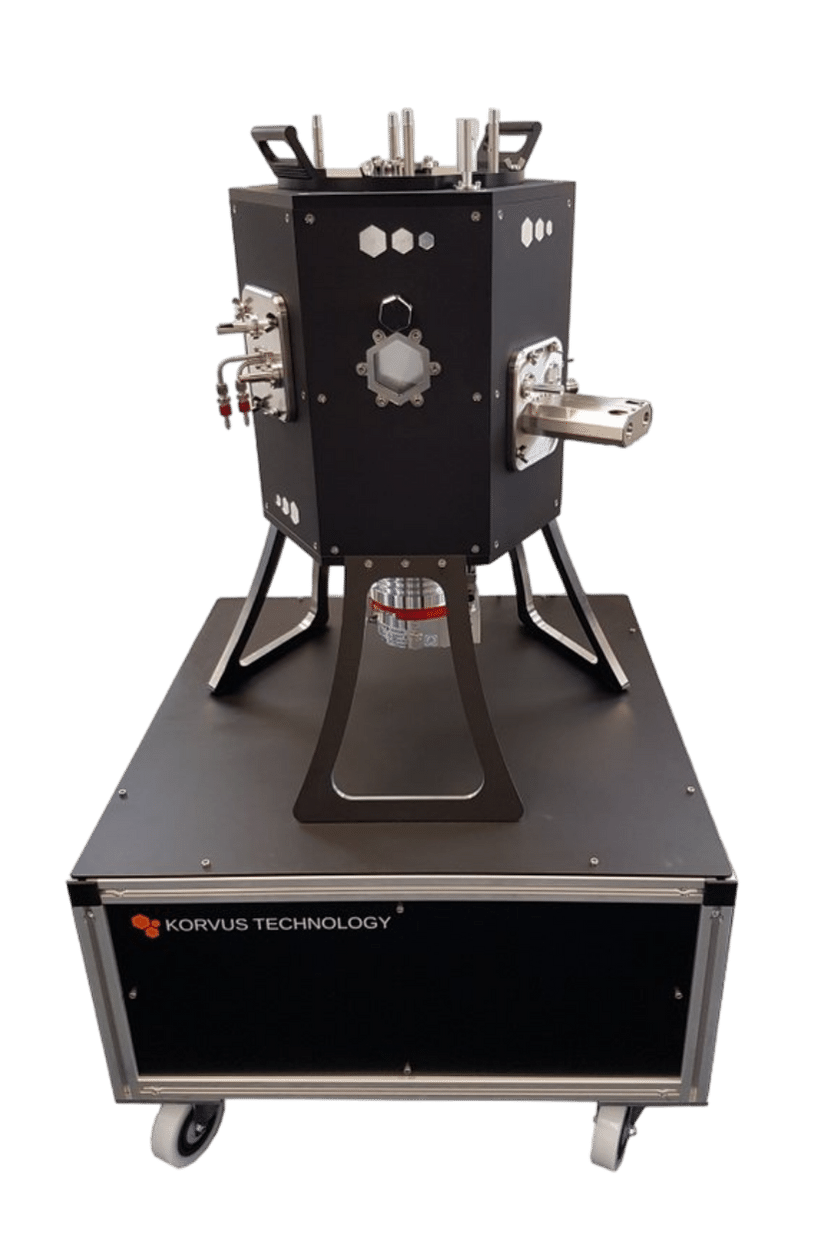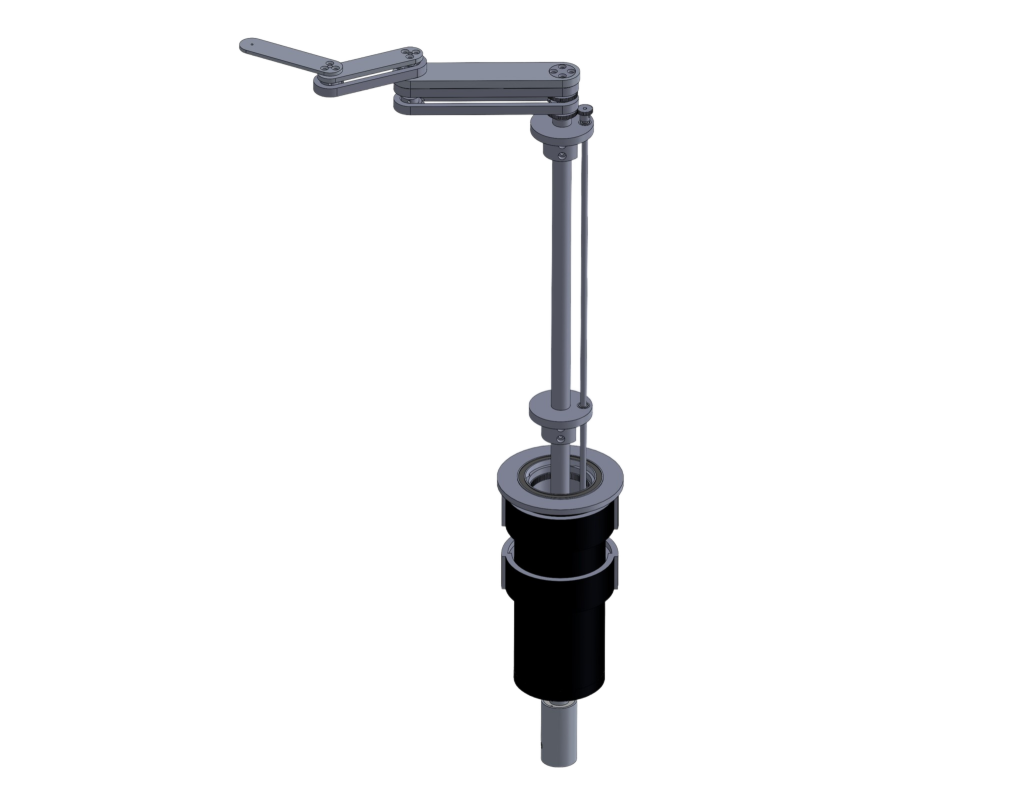Back
Staying true to our philosophy of flexibility and upgradability, the “HEX Cluster” from Korvus allows users to begin with a single HEX-L chamber, and then connect further HEX-L chambers later on for in-vacuum transfer of samples between them.

Korvus Technology’s PVD cluster system provides a solution to make the thin film deposition process more flexible, cost-effective and efficient.
Our HEX PVD systems are unique in their versatility. The highly modular design prioritises customisation and flexibility for manufacturers and researchers using thin film deposition.
The Benefits of a PVD Cluster System
Physical vapour deposition (PVD) converts a material to gas and directs it toward the substrate, creating a thin layer of material on the substrate.
A PVD cluster system connects PVD chambers together to enable additional benefits of the existing PVD system.
High ThroughputProcess multiple substrates at once or in quick succession with ease.
With the HEX Cluster, you don’t have to worry about atmospheric exposure between PVD stages. This maintains the purity of the material. The HEX cluster’s customisable properties also make it easy to switch deposition sources, remove panels, and integrate third party instruments as needed.
With the HEX Cluster’s increased user control, you can reduce contamination risk. The PVD cluster tools create multi-layers for distinct classes to avoid cross-contamination between materials like metals and polymers.
- Space and Cost Efficiency
PVD is a complex, and often expensive, process. The HEX series design and modularity saves space, money and time. The HEX Cluster allows the addition of HEX-L chambers as required to create a cluster system, which means you can add chambers as your research needs change. Furthermore, the robotic transfer arm is designed and manufactured by Korvus making it a highly cost effective option.
|
The HEX PVD Cluster System
The HEX PVD cluster system produces thin films sustainably and efficiently. With the HEX PVD cluster system, you can:
- Develop multi-layers of different classes of materials
- Separate stages of thin film deposition processes into different chambers
- Expand PVD capacity with more deposition chambers, sources and tools
- Future proof your research
Since the HEX-L system is highly modular, you can begin with a base model and upgrade as needed. Using this method eliminates unneeded downtime and installation costs. Our systems fit a variety of research and manufacturing purposes. |
 |
|
Each HEX-L Chamber:
Can hold up to five sputtering or evaporation sourcesAccommodates sample sizes up to 150 mm, or multiple smaller samples
Has a chamber volume of 50 L
Its aluminium frame has six sides and is lightweight so user-friendly. The open design makes it easier when it comes time for loading and unloading material or cleaning since you’ll have easy access.
|
 |
|
Flexibility in Cost and Purpose
The HEX cluster system takes the aspects that made the rest of the HEX series popular and improves it. The thin metal frames in the design make it as versatile as possible. You can switch deposition sources and remove panels depending on your research needs.
The HEX-L system can create thin-film applications of varying thickness, from one atomic layer to multi-layer materials. The system also adapts to various coating materials, including:
- Organic compounds
- Pure metal
- Metallic alloys
With the HEX PVD Cluster System, you also have an in-house Korvus designed and manufactured robotic transfer rather than paying for a third-party transferring mechanism. This saves you money and time for enhanced PVD productivity. This also means that Korvus have the expertise across the entire system.
All these factors combine to democratise access to cluster systems for researchers in thin-film deposition. This system is attainable for researchers on a variety of budgets.
|
 |